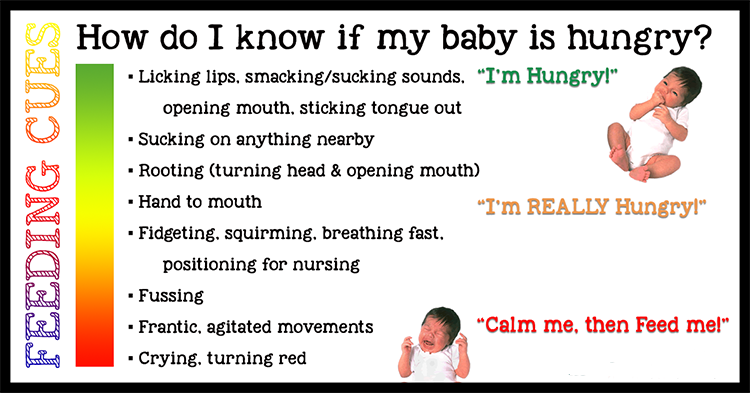Understanding Infant Hunger Signals and Feeding Patterns
Infants should be fed when they exhibit signs of hunger, ideally before crying occurs. Recognizing early cues helps make breastfeeding smoother for both mother and baby.
Common hunger cues in babies can be categorized into three stages:
- Early signals: Smacking or licking lips, opening and closing the mouth, or sucking on hands, fingers, toys, or clothing.
- Active signals: Rooting against the caregiver’s chest, attempting to position for nursing, fidgeting, repeated tapping on the parent’s arm, or fussiness with rapid breathing.
- Late signals: Frantic head movements or crying, which indicate urgent hunger. Calming the baby before feeding becomes essential at this stage.
Frequently Asked Questions
“Should I wake my newborn to nurse if they sleep excessively?”
Yes, during the early days or weeks, newborns often need to be awakened for feedings if they don’t rouse independently. Aim for nursing every 2 hours during the day and at least once nightly until consistent weight gain is established (minimum 4 ounces per week for babies under 4 months). After this milestone, parents can follow the baby’s natural rhythm.
“Is waking necessary if my older baby sleeps longer at night?”
For babies under 4 weeks, wake them every 4–5 hours at night if they don’t self-awaken. Beyond 4 weeks, uninterrupted sleep is acceptable if the baby shows normal urination, bowel movements, and weight gain.
“Does hand-sucking always indicate hunger?”
After the newborn phase (around 6–8 weeks), hand-sucking often reflects exploration or teething discomfort rather than hunger. Babies use their mouths to explore their environment, and gum tenderness may precede tooth eruption by weeks or months.
By responding to early hunger cues and adapting to developmental changes, caregivers can support healthy feeding routines while addressing common concerns.




